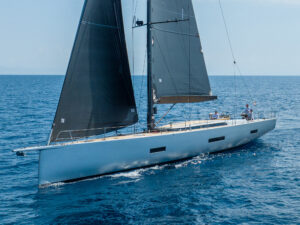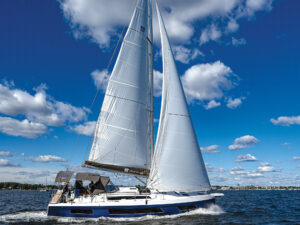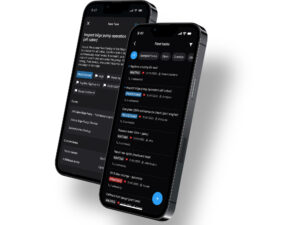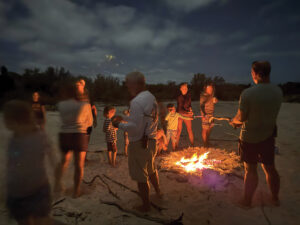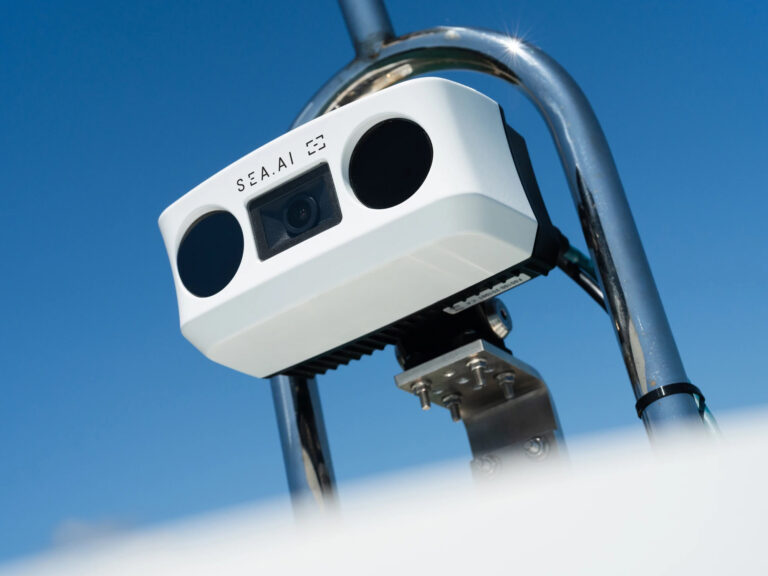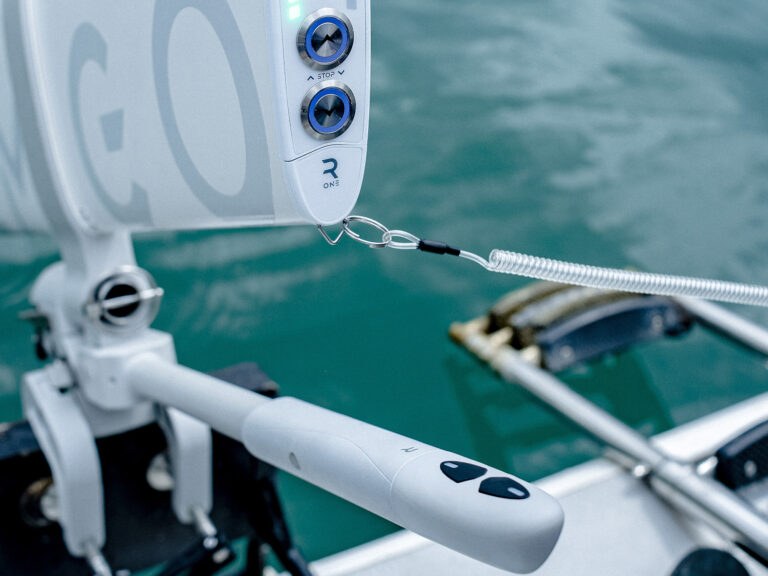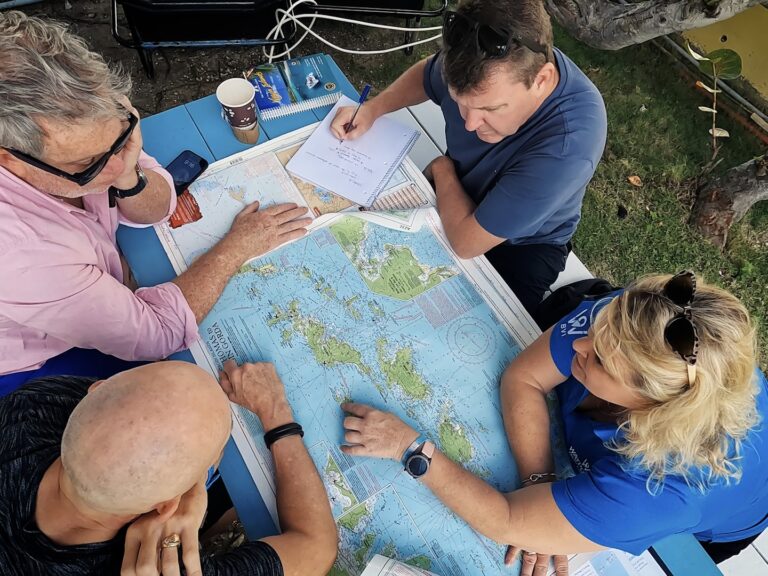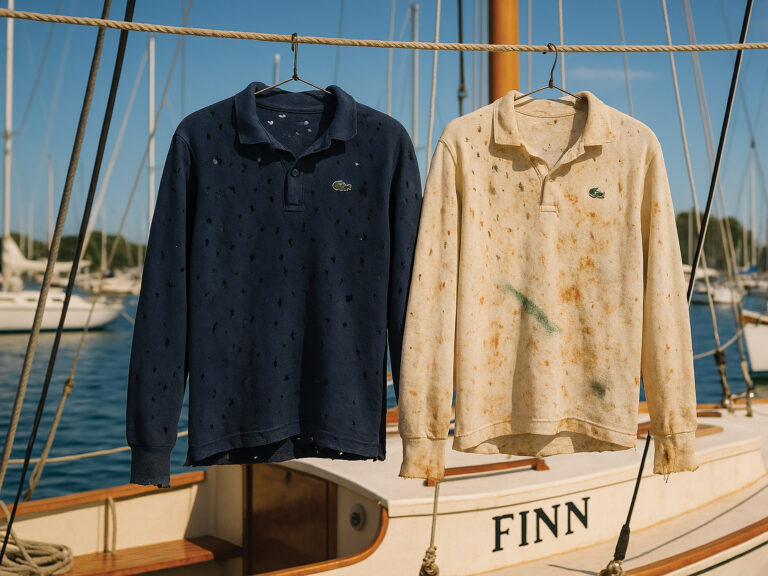“Watch this!” Nigel Calder smiled and turned a battery switch. Almost instantly the room filled with choking smoke. As he disappeared in the acrid cloud, he expounded on the importance of proper onboard-circuit protection — having just demonstrated what happens when a dead short causes 400 amps to surge through an unfused wire.
The author of the best-selling Boatowners Mechanical and Electrical Manual lives in a 200-year-old Maine farmhouse with attached barn when he isnt aboard Nada, the 38-foot, William Atkin-designed Ingrid cutter he and his wife, Terrie, built from a bare hull. For a man with Nigels interests and avocation, that barn is a necessity. Hes restoring an 18-foot wood Rhodes daysailer in one room, while a replica of a boats electrical system sits in another. In between are piles of rope, tools, cables, hoses, batteries, and endless bits and pieces needed by someone who can fix just about anything and, for a living, writes books about how to do it.
In addition to his electrical and mechanical endeavors, Nigel, in partnership with his wife, has found the time to take frequent, extended sailing trips and write two cruising guides to the northwest Caribbean. The Calders two children, Paul and Pippin (aged 9 and 11), accompany them on their expeditions. Not surprisingly, Nigel describes himself as a “Type-A” personality, and his cruises tend to be research trips first, with adventure and education added bonuses.
Nigel was born and raised in England, where he began sailing dinghies on flooded gravel pits, though the English Channel was only an hour away. By the age of 13, he was rebuilding old motorcycles in the backyard. In college he salvaged cars from the “breaker” yard to use and sell to his friends. After college, he met his American wife-to-be, Terrie, and they were soon crossing the North Sea aboard a borrowed 28-footer. After an inattentive freighter ran them down and nearly took the transom off the boat, Nigel started working at an automotive assembly line, and later in a foundry, to earn more money for repairs. Being a bit wary of the sea at this point, he and Terrie built two steel-hulled narrow boats for the English canal system. When they moved to Louisiana, his mechanical experience helped him to secure a job working on oil rigs in the Gulf of Mexico.
Oil rig work was intense and dangerous — he survived three platform fires, was seriously burned, damaged his back, and nearly lost his legs. A deep respect for doing things the right way was implanted by these experiences, and today Nigel is a leader in promoting consistent marine quality standards. He recently tore out all the wiring in his boat to bring it up to American Boat and Yacht Council (ABYC) standards, because he felt he couldnt preach the gospel without living it himself.
His cruising guides show the same attention to detail as his mechanical books. For his Cuba guide, he used a portable electronic chart plotter (produced by KVH Industries) that gathers input from a GPS and depth sounder, then records everything on a PC. He can carry the whole rig in his 11-foot inflatable, allowing him to survey at 10 knots. Seeing this high-tech wizardry used by a cruiser flying the American flag prompted a Cuban gunboat to put the Calder family under “boat arrest” for nine days, until permission to proceed could be received from Havana. Despite this incident, Nigel loved Cuba and its people. He said, “Theyre unbelievably friendly. In six months we never heard a single hostile remark. They all differentiate between the American government and American people.”
Nigel is a strong proponent of GPS navigation. He admits, “In probably four years, I havent opened my sextant box even to see if its still in there.” But, he does log his GPS position every hour, and he stores a spare unit in the oven to protect it from lightning strikes. He couldnt create his guides without GPS. With Selective Availability turned on, GPS positions vary enough to affect the accuracy of the large-scale chartlets Nigel is creating — hes seen jumps of up to two miles at times, and he knows of several boats that have piled up on reefs. Surveys of the northwest Caribbean often date to the early 19th century, and chart inaccuracies are a bigger problem than GPS glitches, he warns.
The research needed to produce chartlets and a detailed guide for Cuba required an intense pace that was difficult for Terrie and the children. Added anxiety came from a badly damaged, variable-pitch prop, which gave them no reverse, a particular problem when entering uncharted reef passes. They careened Nada, but werent able to make complete repairs without the correct parts. Typical days on the water were 12 to 16 hours long, shifting their home-schooling schedule to odd hours when everyone was tired. When they sailed from Louisiana (where Nada is kept) to Guatemala and back last winter, the memories of the difficult Cuban trip still lingered, and Nigel now says hed separate his work from family cruising if both endeavors are to be successful. For future research voyages, hell recruit non-family crew to help out.
The Calders believe successful cruising couples must be willing to work together to find a style of cruising that suits both partners. When he and Terrie first set off to sail around the world in their newly finished boat, they found disappointment in the cramped quarters, bouts of seasickness, and struggles to raise two babies still in diapers. After 18 difficult months in the Caribbean, they concluded their plans would have to be modified before the cruise destroyed their marriage.
Terrie loved the travel, but not the sailing and the seasickness. Nigel wanted to sail, but found he could get his fill with shorter jaunts and the stimulus of writing. The schedule that evolved includes summers and some winters at their home base in Maine, with periodic cruises of up to six months aboard Nada. Shorter periods away from home allow the children to catch up in school while Nigel works full time from his home office. “Its a compromise that works for us,” he said. Its difficult for the children to move in and out of the school system, Nigel says, “but the responsibility that goes with living on a boat is good for them.”
Nigel loves describing the expeditions he and his family embark on every few years. Last winters cruise to the northwest Caribbean covered 3,000 miles in three intense months, and was the first step in the arduous process toward updating his guide to the area. With Nada based near New Orleans, the longest passage was about 600 miles across the Gulf of Mexico — a trip the Calders have made 16 or 17 times. They leave with a norther blowing, so the first few days provide rough downwind sailing before the front withers and the currents and headwinds of the Yucatan Channel take over. The last bit is often a motorsailing slog into nasty seas built up by the strong current. Then they daysail and gunkhole, including a trip up Guatemalas Rio Dulce. Nigels favorite cruising ground is the northwest Caribbeans Honduras, Guatemala, Belize and Mexico. “Theres some great cruising,” he says. “Beautiful little islands, a wonderful reef. Its not very crowded. Culturally, its really fascinating. The Mayan culture, both past and present, provides wonderful educational experiences for the children.” He and Terrie discount the dangers of taking their family into remote areas. “For years the casualty rate in L.A. or Miami has been higher than in areas where theyve got intermittent civil wars,” says Nigel. “Its all a matter of perspective.”
When it came time to christen their boat, Nigel and Terrie couldn/t agree on a name, so they called her Nada (“nothing” in Spanish). The name is a great icebreaker when dealing with Spanish-speaking officials in the Caribbean, providing chuckles all around. Despite her name, Nada means a lot to the Calders. She has been a part-time home, a research vessel, and a vehicle with which the entire family can experience natural wonders and cultures few people get to contact first-hand. Nada is simple, rugged, comfortable, traditional, and safe. She suits Nigels family and style of cruising. He states, “Every time you escalate the level of complexity, you escalate the long-term downtime for the boat, and the cost. You can get to the point where all youre doing is fixing the boat. We dont want to become slaves to the systems on the boat.”
Nadas systems are fairly standard, with a few interesting twists. Nigel feels that electrics are the source of most problems on modern cruisers. Nada has a single, large battery bank, consisting of 8D marine gel batteries, with a smaller engine-starting battery isolated from the main bank. This arrangement reduces the daily draw on the batteries, as a percentage of the total capacity, from what it would be were there two banks. “The greater the depth of discharge, the shorter the battery life,” Nigel explains. And, because the maximum charging rate is a percentage of the total battery capacity, higher rates can be used, reducing engine running time. Small solar panels keep the batteries charged when the boats in storage, and a wind generator helps when at anchor. Nigel prefers gel batteries for the on-again off-again type of cruising he does, because they dont need to be monitored when the boat is in storage for prolonged periods.
Nadas details include reels at the bow and stern to store nylon anchor rodes, and to save Nigels back, and a large electric windlass for all the all-chain main rode on the primary anchor. Nada was a very tender boat, so a recent conversion from ketch to cutter rig took over 1,000 pounds from aloft. Unfortunately, when Nigel moved the mainmast aft to rebalance the new sail plan, he moved it too far, increasing the weather helm. His next big project will be to move the mast several feet forward again. Other recent improvements include the installation of a new diesel and a three-bladed feathering propeller.
Nigels recommendation to prospective cruisers is to find a tried-and-true boat from an established builder who has been in business a long time. Make sure the company not only has a good brand name, but a continuous track record producing cruising boats, he says. He believes even new boats should be surveyed, and buyers should plan on upgrading the electrical systems on most boats. He personally prefers equipment that has been on the market for a few years, to make sure all the bugs have been worked out. In his opinion, “It doesnt matter what these people plan on the drawing board; once it goes out to sea, they find out things nobody ever dreamed about.”
Nigel thinks his degree in philosophy was good training for tackling mechanical and electrical problems. Philosophy is the application of logic to language, and he says, “Machines are entirely logical.” A great believer in trial and error, he says, “You cant learn from books; youve got to go down there and try it as well, and youve got to break something. The book can tell you what steps to go through, but until youve actually done it, you havent really learned anything.”
Books by Nigel Calder
Refrigeration for Pleasure Boats, International Marine 1990;
Marine Diesel Engines, Second Edition, International Marine 1991;
Boatowner’s Mechanical and Electrical Manual, Second Edition, International Marine 1996;
The Cruising Guide to the Northwest Caribbean, International Marine 1991;
Cuba: A Cruising Guide, Imray Laurie Norie and Wilson Ltd. 1997.
Contact Nigel Calder on the Internet at: http://www.lincoln.midcoast.com/~ncalder.
————————————————————————
John Kettlewell is a freelance boating writer, editor, and photographer. He and his wife, Leslie, have authored The Intracoastal Waterway Chartbook and The International Marine Light List And Waypoint Guide. A former editor for Reed’s Nautical Almanacs of North America, Chart Kit, and International Marine publishing, John has cruised between Labrador and the Caribbean for more than 20 years, including 12 years of living aboard. His current boat is a 32-foot Marc Louis Rifflart catamaran. John and Leslie are Rear Commodores in the Seven Seas Cruising Association.
————————————————————————
Copyright © 1997 by Cruising World Publications. All rights reserved.

